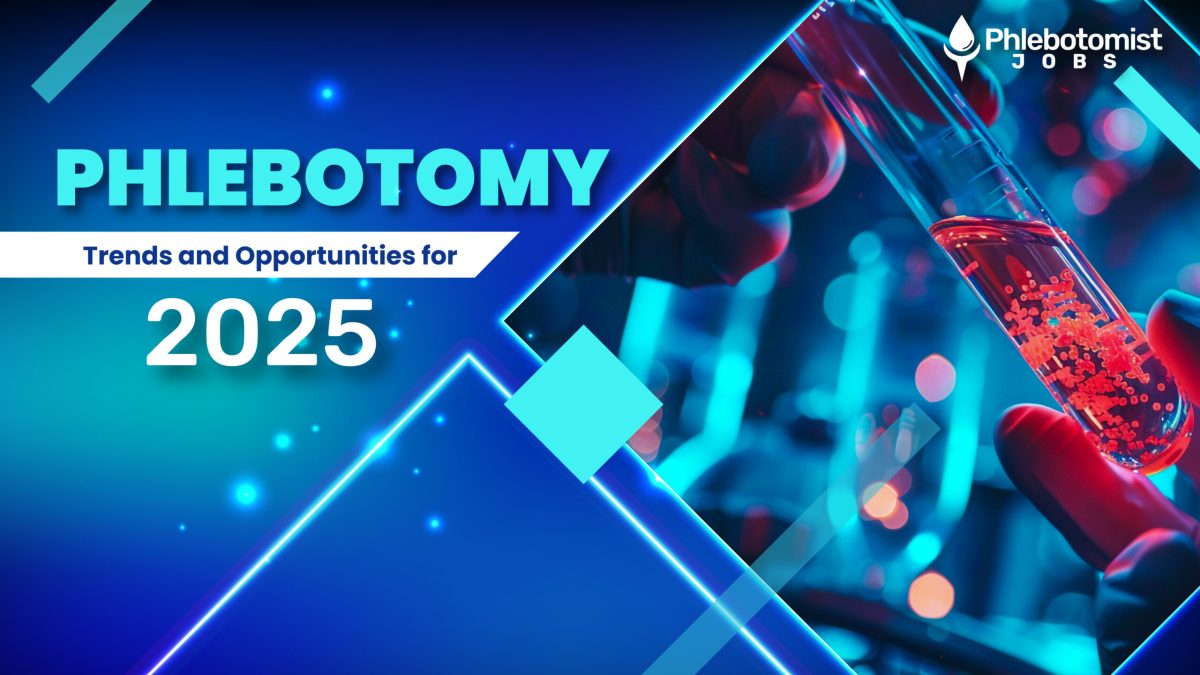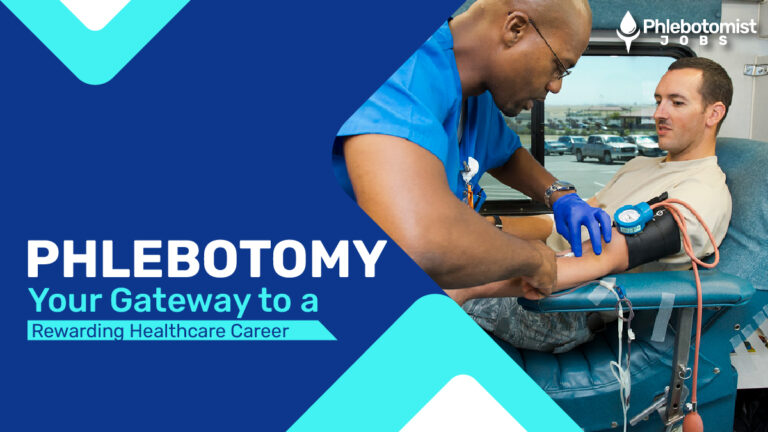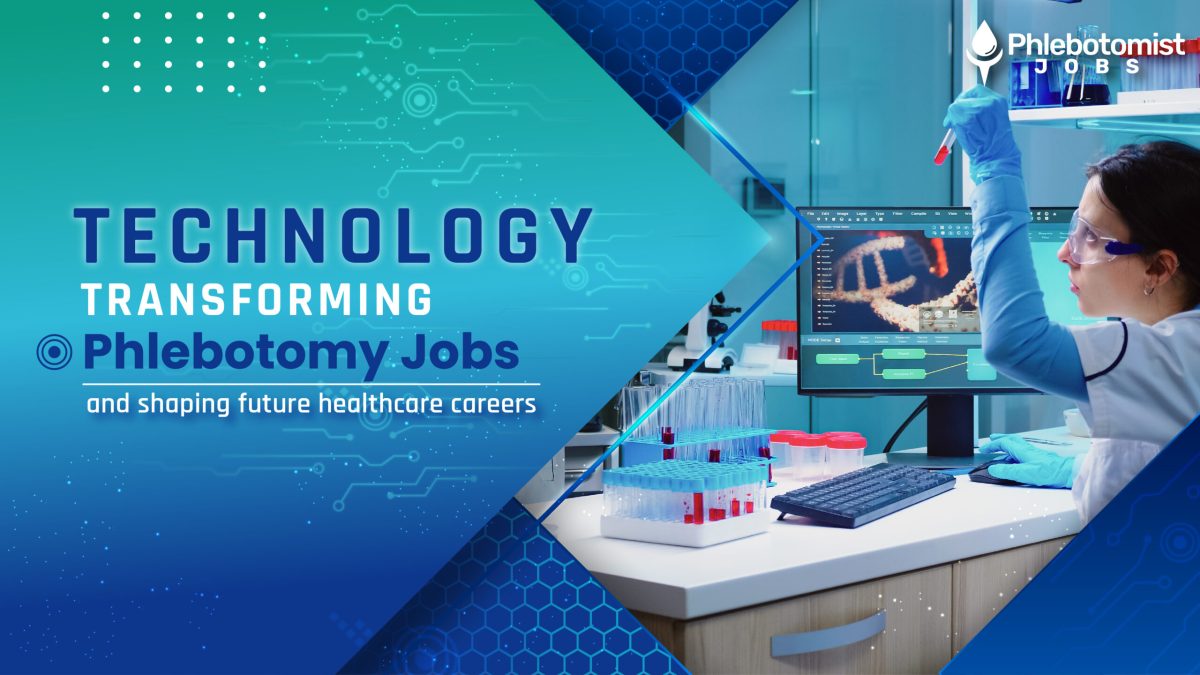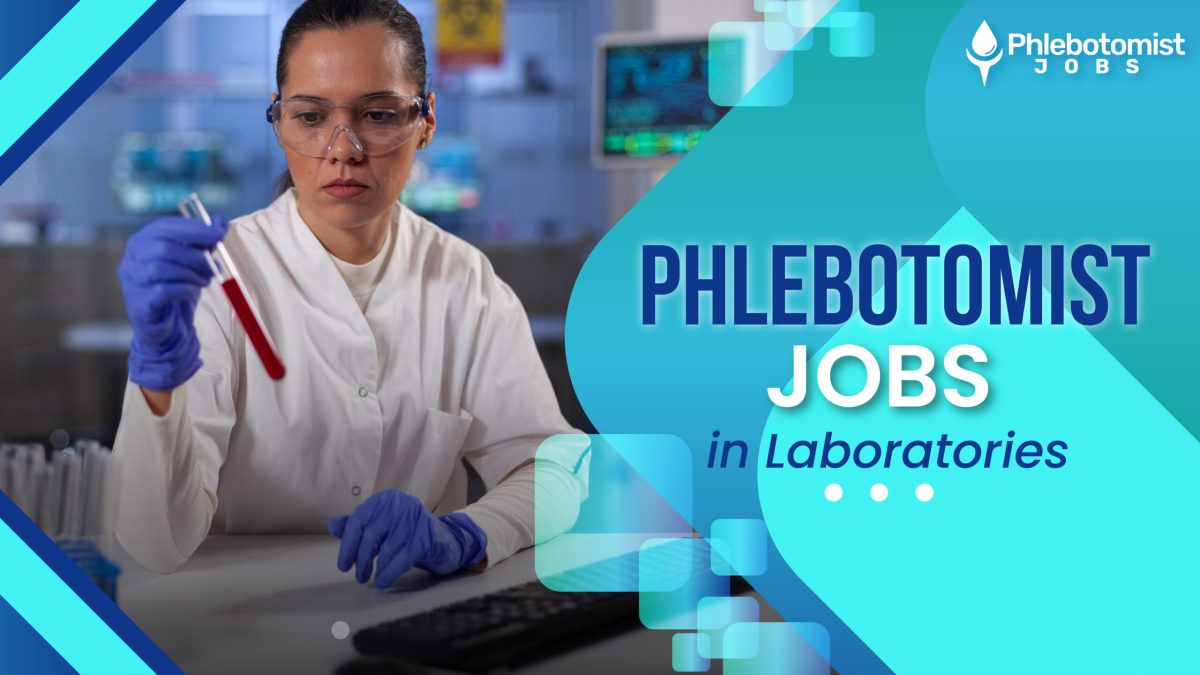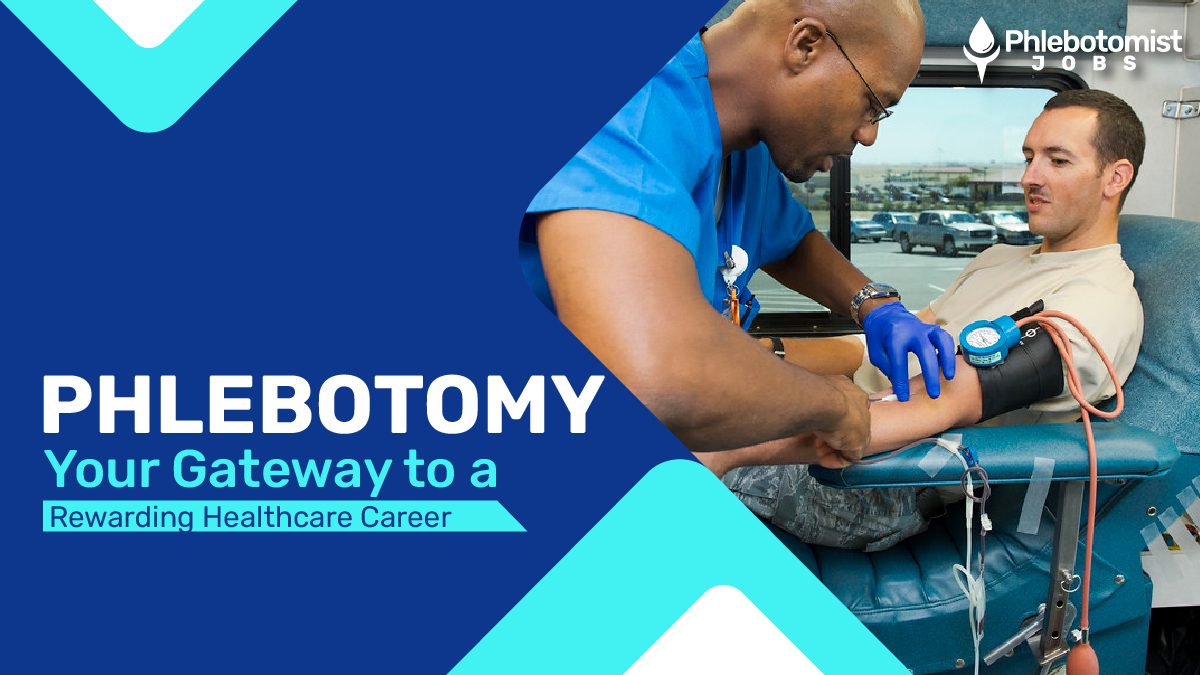Table of Contents
ToggleEntering 2025, the future of phlebotomy indeed has a bright outlook. The field is full of ripened opportunities for modern technology and shifting healthcare needs. Phlebotomists will certainly find a dynamic and fulfilling career landscape ahead. So, the trends that shape the future of phlebotomy and the opportunities available to skilled professionals in such an important profession.
Advances in Technology in Phlebotomy

As we know the world of health care is always changing, and phlebotomy is no exception. The next decade will be filled with advanced technological breakthroughs that will alter the scope of work in terms of the role of phlebotomists as well.
Automated Blood-Collection Devices
One of the most promising devices for phlebotomy is an automated blood-drawing device. In this case, the mechanism of this machine utilizes artificial intelligence and precision robotics in order to locate veins and draw blood with the least amount of pain for the patient. It would be quite easy to assume that such technologies simply would make human phlebotomists obsolete. Yet, it’s much more likely to make a first-rate assistant for certain cases or settings where volumes are high.
Portable Testing Equipment
Another future development that is portable testing equipment. This will make testing more portable and faster on-location, thereby reducing the need for samples to be sent to central laboratories. This development can expand the scope of the roles of phlebotomists in possibly involving them more directly with the testing and interpreting preliminary results.
Expanding Roles and Responsibilities
Evolution of health care will bring similar changes in the nature of work for a phlebotomist. The future is not so gloomy for those willing to mold themselves into the changing needs and expand their skills in multi-fold ways.
Point-of-Care Testing
Another trend reportedly to emerge with the increased use of portable testing equipment is that phlebotomists may assume additional responsibilities in point-of-care testing. This would range from blood draw alone to simple analysis and reporting of results to providers and perhaps communication about results to patients or their legal guardians as well.
This extended role gives the profession a sense of more challenge and worth in healthcare facilities.
But the need for high-specialized phlebotomy may grow along with the rest of the medical world, especially for specifics such as draws for specialized testing or specific patient populations. Developing the most niche skills will be in extreme demand.
The Impact of Telemedicine on Phlebotomy

Telemedicine has exploded over the past few years trend that is sure to continue into 2025 and beyond.
Mobile Phlebotomy Services
With the growing number of patients who would require consultation services done remotely will necessitate increasing numbers of phlebotomists in reaching their homes or offices to collect samples. More than that, the new arrangement could offer greater flexibility since one could do freelance work on individual terms.
Phlebotomists will increasingly engage with telehealth platforms. Some examples include work collaborations with distant healthcare providers when coordinating sample collection and handling, as well as possibly instructing virtual patients on what to expect in the process of blood collection and tests.
Career Outlook and Job Opportunities
Phlebotomy presents a bright future ahead with a potential job boom soon.
Increasing Need for Phlebotomy Providers
More skilled phlebotomists are likely to be required as the population ages and the need for diagnostic testing increases. The BLS predicts that between 2020 and 2029, employment of phlebotomists will grow much faster than the average for all occupations, and this trend is probably to continue into 2025 and beyond.
Employment Opportunities in Non-Traditional Settings
The hospitals and diagnostic laboratories will undoubtedly continue to be the largest employers of phlebotomists, there may well be increasing opportunities for them in less traditional settings.
Some potential areas include:
- Wellness centers and prevention health clinics
- Sports medicine facilities
- Corporate health programs
- Research institutions
- Home health care services
Preparing for the Future of Phlebotomy
Based on these exciting opportunities, prospective and practicing phlebotomists will need to adopt both the provision and the probability of continuing education in their profession.
Embracing Technology
Familiarization with new emerging technology in the phlebotomy practice will be of great importance. This may range from training on new methods for drawing blood and on equipment for mobile testing.
Soft Skills Development
Phlebotomists are going to interface with many patients. As such, communication skills and interpersonal skills will play a major role in this expanded professional field. Good, clear procedure explanations will be of utmost importance as will the ability to soothe anxious patients and the overall ability to be effective within a healthcare team.
Pursuing Continuing Education
The constant pursuit of continuing education in newer concepts of phlebotomy and healthcare shall be an absolute necessity. Such an endeavor may include following up on additional certifications or specialized training to make one look exceptional in the employment market.
Overview of Phlebotomy in 2025 and beyond
The future of phlebotomy looks quite promising in 2025 and beyond. Advances in technology, expanding roles, and an increasing need for skilled professionals all point to a dynamic and rewarding career path. If adaptable, embracing new technologies, and continuously developing, phlebotomists will be an essential part of the healthcare landscape of tomorrow. Be prepared as a phlebotomy and job alert. Like our pages and visit our website https://phlebotomistjobs.us/ to be the first to know about the new updates in the industry and thrilling updates on phlebotomy and other related fields!
Follow us on Social Media: LinkedIn | Facebook | Twitter | Instagram

